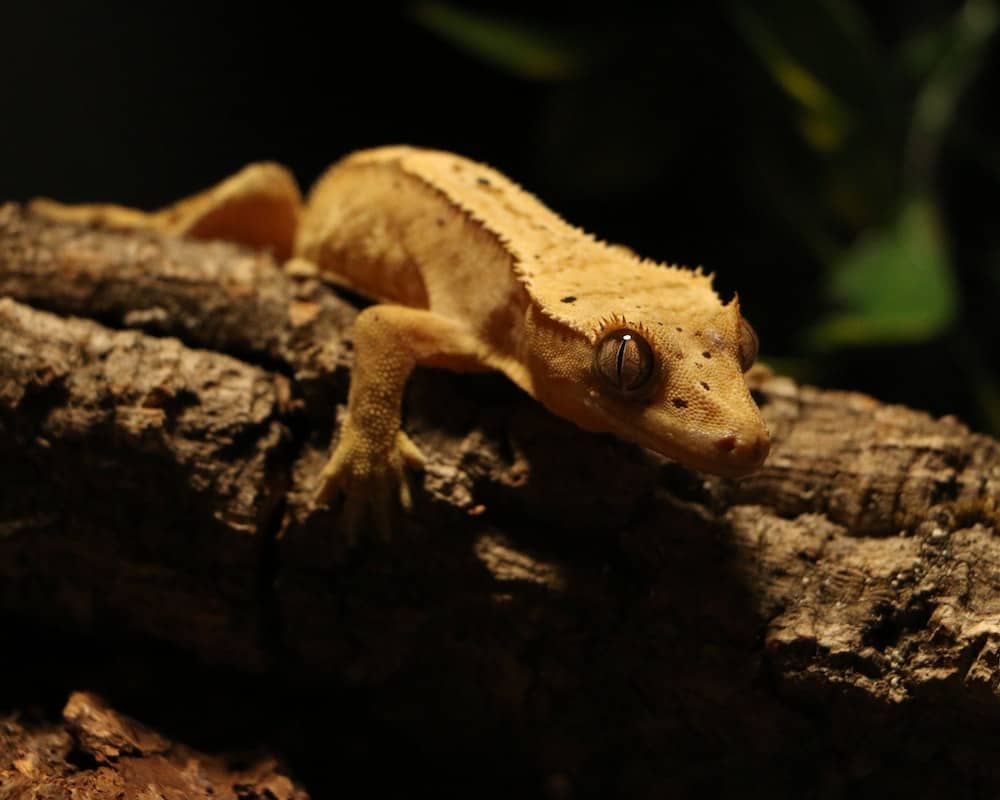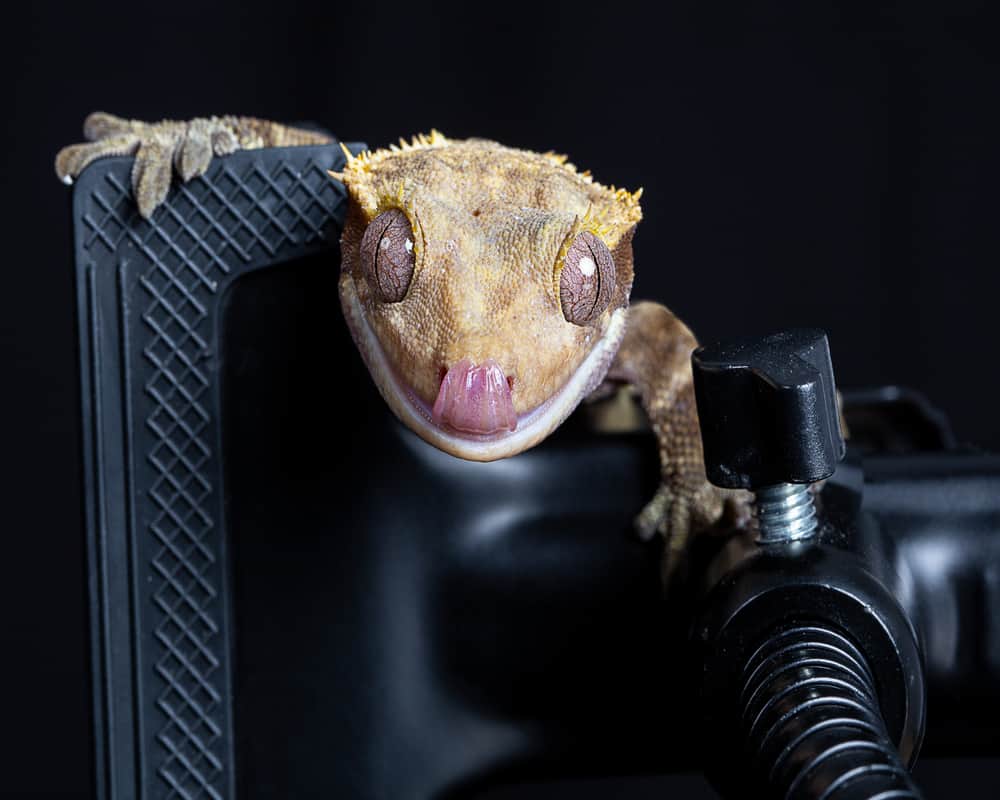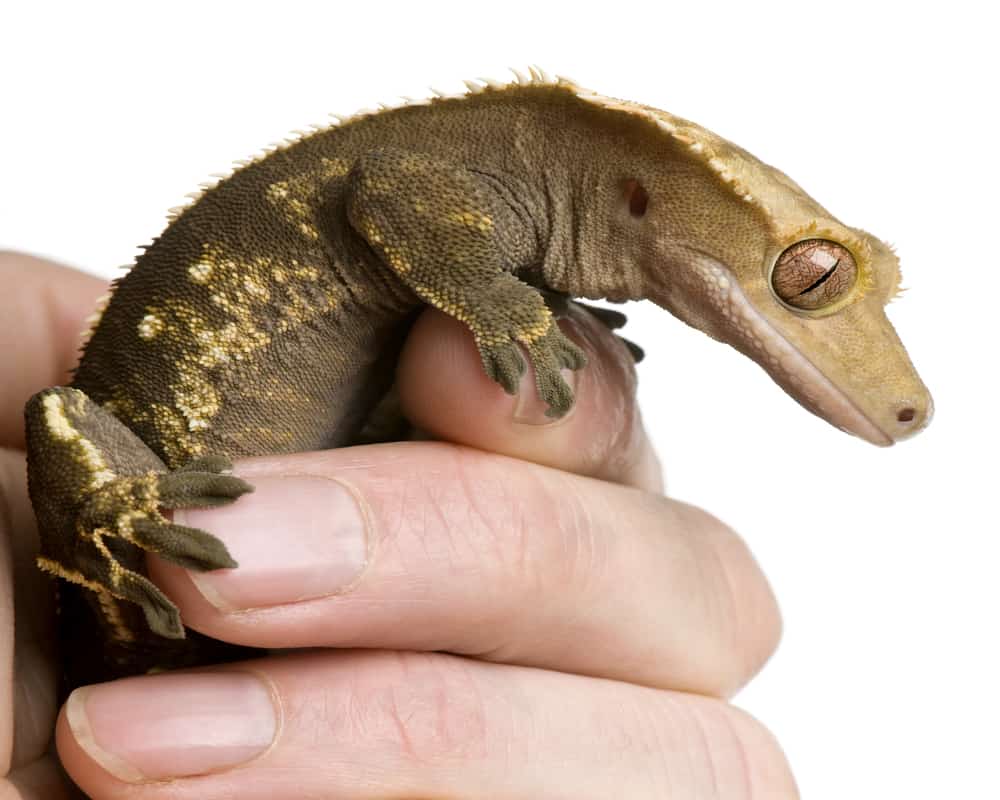Are you wondering why a crested gecko is having trouble climbing when they are arboreal animals that live above the ground? There are several reasons why these reptiles might have difficulty climbing.
They might have issues with climbing due to shedding, or the humidity might be low. Other than these, it can be due to their health, age, or sometimes they might face a few deficiencies.
How Do Geckos Climb Seamlessly?
Geckos are known as great climbers and can stick to any surface. They can hold on to any surface due to the tiny hair-like structures on the bottom of their feet.
Researchers at the (NIST) National Institute of Standards and Technology used the high-energy synchrotron to examine the tiny-hair structures closely.
The structures were discovered to be coated with an ultra-thin layer of lipid molecules. This thin layer is in an upright orientation. The tiny hair is called setae; when it branches into even smaller bristles, they are called spatulae. The gecko forms a van der Waals force- the repulsive and attractive forces between two dipole molecules.
When the tiny hair on the feet gets close to the contours in the ceilings and other surfaces, the electrons from the hair molecules and the electrons from the ceiling or wall molecules interact and create an electromagnetic attraction.
This is the reason geckos can climb smoothly on surfaces.
Why Does a Crested Gecko Have Difficulty Climbing? Top 14 Reasons
Here are the reasons why they might be showcasing climbing difficulties.
- Low Humidity or Dehydration
These reptiles are used to the high humidity of 60-80%. When the humidity is low, a gecko might seek moisture from the ground.
Low humidity also causes dehydration. These animals like to have the water presented in an accessible manner. When the water is not shown in an accessible way, geckos avoid drinking. They do not prefer drinking water from a bowl. They like to lick water droplets from the side of the tank.
When they avoid drinking water, they get dehydrated and do not feel like climbing. They become distressed and physically weak. Using a thermometer to check the temperature will help.
- Age
If the crested gecko is too young, it might have difficulty climbing. Some take time to climb because they are not confident or did not hatch with sticky feet. They will take a few weeks to start climbing.
- Deficiencies
When these reptiles have nutritional deficiencies, they tend to struggle with climbing. Deficiencies rise due to inadequate diet.
The diet provided to a gecko might be lacking calories causing lethargy. Or, the diet lacks nutrients such as vitamins A and D and calcium.
The diet must contain an adequate amount of every nutrient. If the diet contains too many calories, it causes obesity. Obesity can cause climbing problems as well.
- Shedding
During shedding, crested geckos do not climb. Young crested geckos regularly shed, almost once a fortnight. This helps them grow freely.
Older or adult geckos shed every month or sometimes two. During their shedding process, their grip becomes less firm because when they are shedding or about to shed, a particular fluid accumulates between their new and old skin.
This helps the old skin loose freely. During this time, their feet are not correctly attached to the inside of their old skin, making it difficult for them to climb.
- Dysecdysis
Dysecdysis means when a gecko fails to shed their old skin completely. When they do not shed completely, some old skin might have retained on their feet or toes, leading to trouble while climbing.
A vet can help prove the old skin. Otherwise, this can be prevented by misting the tank regularly during the shedding process. Providing a wet flannel will also help exfoliate the old skin.
- Mineral Deposits
When they are in a glass tank, it is common for mineral deposits to form. This can interfere with the gecko’s ability to stick to the glass.
Mineral deposits can be removed by scrubbing and cleaning. The reason deposits form is due to using plain water while misting the tank. With distilled water, mineral deposits will not form.
- Diseases or Sickness
When they are sick, they have trouble climbing. Neurological diseases can cause climbing issues as they affect balance and coordination. Even parasitic infection can affect their climbing skills.
- Soft Materials
Crested geckos have difficulty holding on to thin or soft things on an incline.
The climbing ability and the gecko setae are reduced by 50% when they try to form van der Waals force with thin and soft materials, especially when placed perpendicular to the floor.
- Non-sticky Surfaces
When surfaces have been treated or coated to become non-stick, these reptiles have trouble climbing them.
People use Teflon (Polytetrafluoroethylene), a plastic material that coats surfaces to make them non-stick. The outer layer of Teflon contains fluorine atoms that repel any other material.
It becomes difficult for them to climb because the coating lacks positive and negative charges, which the gecko’s setae need to induce van der Waals force.
- Toe Injury
If a crested gecko has experienced a toe injury or lost limbs, it causes loss of the number of setae. Setae plays an essential factor in their climbing ability.
- A Lot of Condensation
If there is too much condensation on the glass, it can cause problems for them. Due to condensation, the glass becomes slippery, making it hard to climb.
Condensation also means there is no proper ventilation. When there is no adequate ventilation, fungus and mold tend to form, making it even harder for a gecko to climb and live.
- Stress
These reptiles get stressed when there is a change in their living situation. When stressed, they avoid climbing and spend more time on the ground.
- No Proper House Arrangement
Crested geckos like to climb and jump around in their habitat. The glass wall will not be enough. The enclosure must have branches, plants, and vines to help them stay off the ground.
The enclosure filled with 50% plants will provide space for the gecko to climb and jump. Incorporating things to climb will be helpful and keep the gecko happy.
- Blocked Setae
Dust, dirt, food, powders, or substrate in the crested gecko enclosure tend to attach to the setae. Due to this, they have trouble climbing because, with blocked setae, they no longer can use van der Waals force to climb.
The advantage is that geckos have a self-cleaning mechanism. Small particles mostly bond with the setae; they become large particles when they continue to bond.
When the large particle on the setae comes into contact with another large particle, such as glass or food, the force will repel itself, leading to unblocked setae.
Few Tips to Help These Reptiles with Climbing
There are a few ways to prevent a crested gecko from having trouble while climbing.
The tips below are related to the causes of difficulty climbing.
- Hydration
Ensure that these reptiles have water in an accessible manner; also, ensure there is regular misting in the tank.
- Keep It Clean
Cleaning the glass regularly will keep the dirt and mineral build-up away. This will help these reptiles climb properly.
Deep cleaning of the entire tank will also be beneficial. Check out this step-by-step guide on cleaning the gecko tank.
- Humidity Check
Ensure the humidity is not too low. When the temperature is accurate, they will stay off the ground.
- Nutrients
Providing them with calcium and vitamins A and D will keep them healthy and strong. They will be able to shed properly as well. They must have a balanced diet, not too many calories and not too few.
- Habitat That Replicates Nature
Providing a place to live and replicating their natural habitat or environment will reduce their stress, and they will roam around the enclosure without fear.
- Things to Climb
Providing rocks, plants, and tiny branches will make them climb around and enjoy the space.
- Checking on Them
Checking on the crested gecko during and after shedding will help understand if there is a blockage on their feet.
Also, checking for small particles on their setae regularly will be beneficial. This is because sometimes blockage can lead to inflammation.
Wrapping Up
We hope you’ve got your answers to why your crested gecko is having trouble climbing. Check out the various tips provided to help your pet. However, if the issue persists, do not hesitate to contact a vet.




